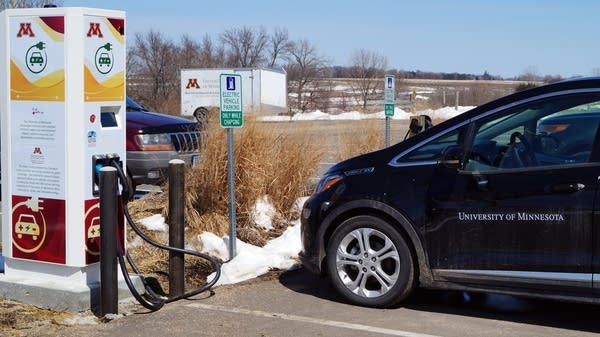Minnesota regulators press utilities to prepare for more electric vehicles in Minnesota

A new fast charger for electric vehicles at the University of Minnesota West Central Research and Outreach Center in Morris.
courtesy of Esther Jordan of WCROC
Go Deeper.
Create an account or log in to save stories.
Like this?
Thanks for liking this story! We have added it to a list of your favorite stories.


